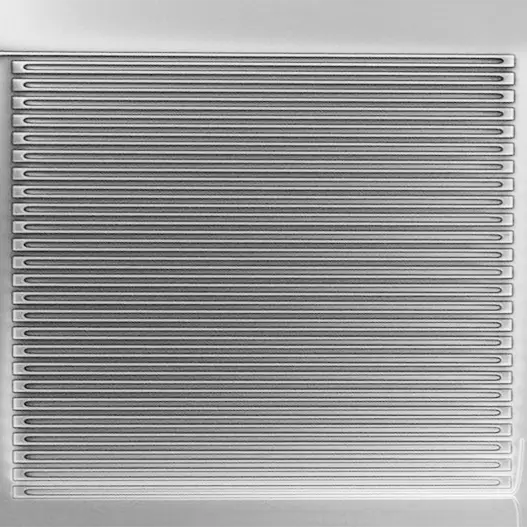Superconducting nanowire single-photon detectors
(SNSPD or SSPD)
Superconducting Nanowire Single-Photon Detectors (SNSPDs) are highly sensitive detectors that can detect single photons. They play a central role in areas such as quantum optics, quantum communication, astronomy, and quantum sensing. Functioning relies on superconducting materials operated at cryogenic temperatures to enable extremely high detection efficiency and low dark count rates.
Superconducting nanowire single photon detectors are based on the principle of superconducting detection. A superconducting material conducts electric current without any resistance when cooled below a critical temperature called the transition temperature.
When a photon hits such a detector, it is absorbed, causing a pair of electrons called a Cooper pair to form. The formation of the Cooper pair causes a decrease in the electrical resistance of the superconducting material, which is registered as a signal.
In an SNSPD, photons generate a voltage pulse when they hit the nanowire. This is a thin (≈ 5 nm) and narrow (≈ 100 nm) superconducting nanowire, typically hundreds of micrometers long. The nanowire is arranged in a compact meander geometry to create a square or circular pixel with high detection efficiency. The nanowire is fed with a DC that is slightly below its critical superconducting current. When a photon hits the wire, it breaks Cooper pairs and thus reduces the local critical current below the value of the feed current. This leads to the formation of a hot spot with finite electrical resistance, which is usually greater than the impedance of the readout amplifier and can thus be measured as a voltage pulse.
This weak voltage pulse is amplified by a low-noise amplifier to make it usable for further processing. The digitization of the amplified pulse is usually done with an analog-to-digital converter (ADC) so that the data can be analyzed with high precision. The digitized signals are processed in real-time to extract the arrival time and other properties of the photons.
Superconducting nanowire single photon detectors offer high sensitivity and high temporal resolution with very high count rates, very short dead times, and very low temporal jitter compared to other single-photon detectors. They can detect single photons at very low intensity, making them ideal for quantum communications, quantum cryptography and quantum computing. Because they are based on superconducting technology, they also have a very low background rate, which means they are very accurate and do not cause false alarms.
However, using superconducting nanowire single photon detectors also has disadvantages. One of the biggest drawbacks is that they usually need to be cooled to very low temperatures, usually below 4 Kelvin (-269°C). This requires special cooling equipment, which can be expensive and impractical. In addition, they have a limited detection area and are therefore not suitable for covering large areas.
Applications
- In quantum communication, SNSPDs enable the lossless detection of single photons, which are used, for example, to transmit quantum bits (qubits) in quantum cryptography systems.
- In astronomy, SNSPDs are used to detect extremely weak light signals from distant celestial objects.
- In biophotonics, SNSPDs are used to measure fluorescence signals in biological samples with high temporal precision.
Advantages of SNSPDs:
- High efficiency: SNSPDs provide detection efficiencies of up to 98%.
- Their time resolutions are in the range of a few picoseconds.
- Their low dark count rate reduces the probability of false measurements.
Disadvantages:
- SNSPDs require sophisticated cryogenic cooling.
- This makes their operation quite costly.
- Since it is difficult to arrange SNSPDs in large arrays, corresponding detectors have only limited scalability.

Scanning electron micrograph of a typical superconducting nanowire single-photon detector (SNSPD). The width of such a meandering nanowire detector is usually in the lower micrometer range.


